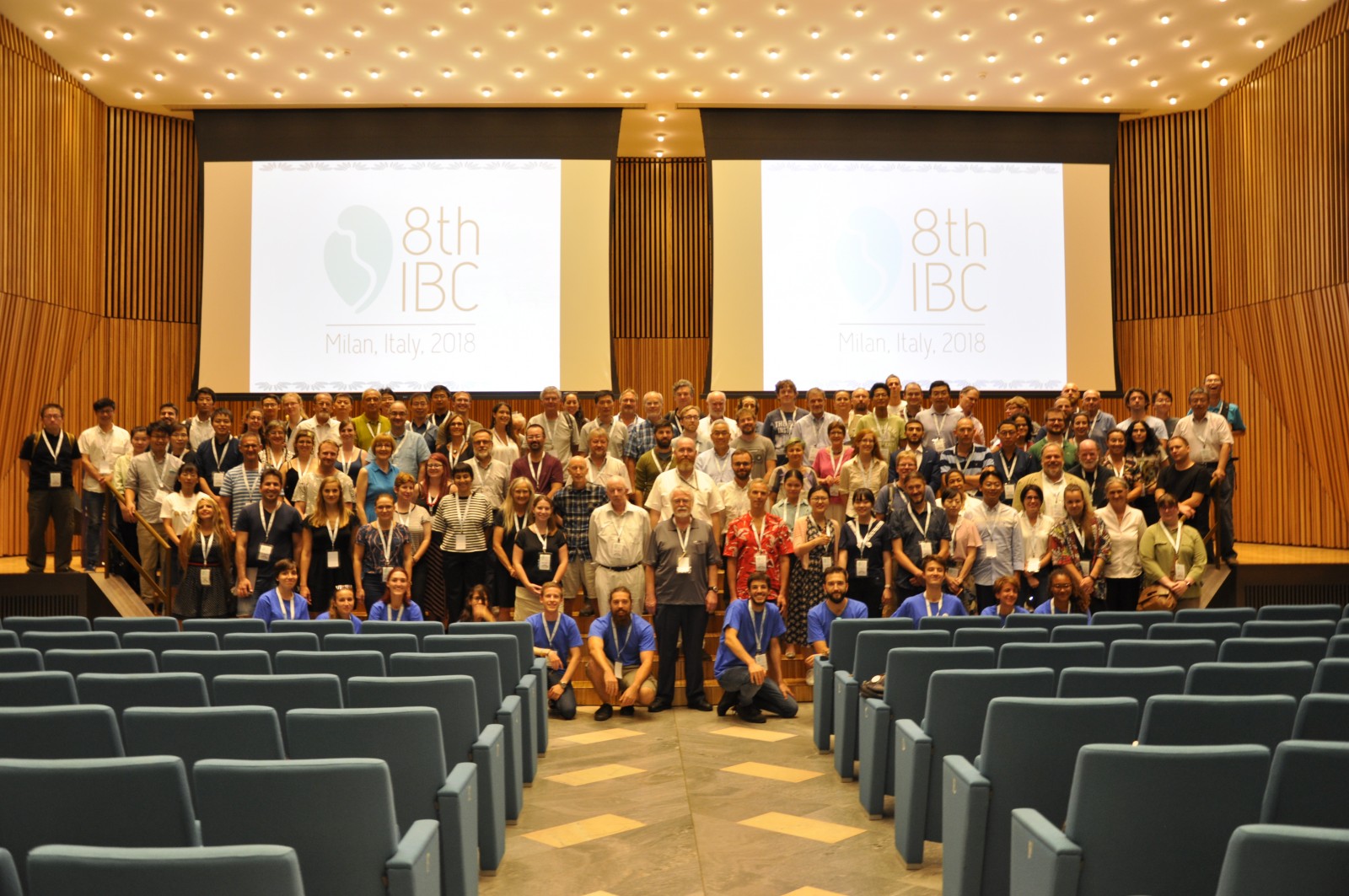Between the 10thand 14th of September 2018, the 8thInternational Brachiopod Congress took place in the prestigious venue of the University of Milan, after the previous editions held in Melbourne (Australia) in 2010 and in Nanjing (China) in 2015. It was the first time, since its foundation over 35 years ago, that this important conference was hosted in Italy.
The Congress was attended by 150 participants from universities and research institutes from all over the world (Argentina, Armenia, Austria, Belgium, Canada, China, Czech Republic, Denmark, France, Germany, Hungary, Iran, Israel, Italy, Japan, New Zealand, Poland, Russia, Slovakia, Spain, Sweden, United Kingdom and USA).
Brachiopods are a group of marine invertebrates known since the Cambrian, that show a high biodiversity and a dominant role mainly in the Palaeozoic oceans. They are considered one of the best biomineral archive, due to the unique characters of their shells, to understand the evolution of marine calcifiers during climate and environmental changes in the recent and deep geological past.
The topics of the Congress have touched all aspects of the study of brachiopods, from systematics and evolution to biostratigraphy, palaeoecology, palaeobiogeography, up to the biology of recent taxa. Particular emphasis was devoted to research on mass extinctions, biomineralization and geochemistry, as well as new methods of microscopic investigation with the latest equipment in this field.
Interesting talks included new findings on the process of shell formation, and on the steps of its possible diagenetic alteration, and multidisciplinary studies on how brachiopods and their shells respond to ocean acidification both in culturing and natural environment and in the geological record. Advancements in brachiopod research were also testified by new discoveries on their phylogeny and taxonomy, as well as on palaeoecology and taphonomy, and on how they could survive and recover after biotic crises, such as the big ones of the end-Ordovician or the end-Permian, ending up with new approaches in shell geochemical analyses.
The abstract volume of the congress can be downloaded at http://permian.stratigraphy.org/files/20180828212711700.pdf
 3D model of the brachiopod species Magellania venosa, made in the frame of the BASE-LiNE EarthProject
3D model of the brachiopod species Magellania venosa, made in the frame of the BASE-LiNE EarthProject
In addition to the oral and poster scientific sessions and two prestigious plenary lectures, the Congress was preceded and followed by three field trips (Spain, United Kingdom and Sicily), as well as by two mid-congress day excursions only a short distance from Milan (Castell’Arquato and Grigna Mountains). Participants had the possibility to discover the wonderful fossiliferous localities of Italy and Europe.
Sometimes released into the background, invertebrate macropalaeontology has a high scientific potential; macrofossils are excellent archives of data which help palaeontologists to understand the lesson from the geological past to interpret our future. The 8thInternational Brachiopod Congress just held in Milan, with its numerous oral and poster presentations, is a clear evidence of that. The brachiopod community has proved to be very active, with a lot of young students and researchers involved in the development of new studies and projects. An example of that is the BASE-LiNE EarthProject, founded by the European community with 21 partners (lead by GEOMAR, Kiel), which produced very innovative multi- and interdisciplinary researches (https://www.baseline-earth.eu/)
So…keep an open eye on macropalaeontology latest discoveries!
Chair of the Congress: Lucia Angiolini & Renato Posenato
Scientific Committee: Álvarez Martínez F., Angiolini L., Brand U., Carlson S.J., Cusack M., Eisenhauer A., Harper D.A.T., Holmer L., Garcia Joral F., Lüter C., Pérez-Huerta A., Posenato R., Shen S.
Organizing Committee: Crippa G., Brandolese V., Garbelli C., Henkel D., Romanin M., Ye F.
This post was written by Gaia Crippa and Lucia Angiolini with revision by Cinzia Bottini
Gaia Crippa is a post-doctoral researcher at the University of Milan (Department of Earth Sciences, Italy).
Lucia Angiolini is full professor at the University of Milan (Department of Earth Sciences, Italy).

